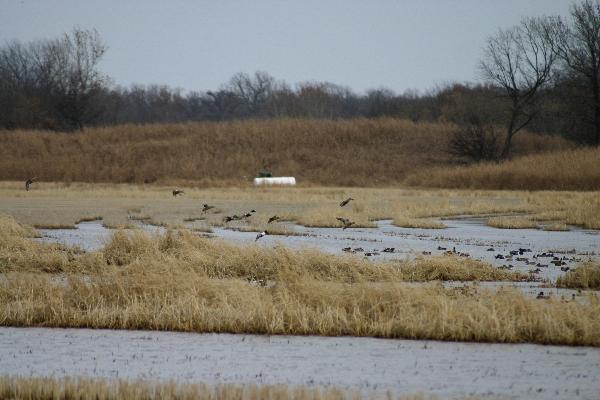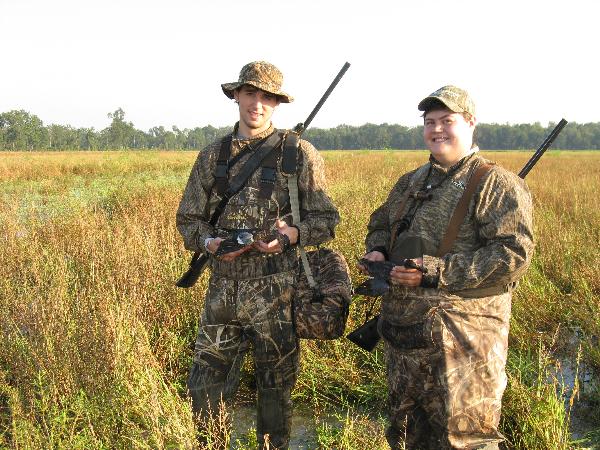Evaluation of Waterfowl Hunt Management
and Sanctuaries on Mississippi Wildlife
Management Areas
Principal Investigators
Dr. Michael L. Schummer
Mississippi State University Department of Wildlife and Fisheries
Dr. Richard M. Kaminski
Mississippi State University Department of Wildlife and Fisheries
Graduate Research Assistants
Elizabeth St. James
Mississippi State University Department of Wildlife and Fisheries
Providing ample waterfowl hunting opportunities while sustaining huntable populations of waterfowl on Wildlife Management Areas (WMAs) is a unique challenge faced by managers in Mississippi and other states. Uncertainty regarding the balance between these two common objectives is noticeable by the wide variety of waterfowl hunt management scenarios used on WMAs and private lands. Nonbreeding waterfowl often use habitats containing high quality forage to meet the physiological demands of migration and winter. Although forage may be available, disturbance can make food functionally unavailable to waterfowl, resulting in spatial (e.g., use of sanctuaries) and temporal (e.g., nocturnal feeding) changes in habitat use. Increased disturbance, including hunting, are known to reduce use of areas by waterfowl, thereby potentially reducing suitability of habitat for waterfowl and hunter harvest/satisfaction. Conversely, hunting an area too little (sanctuary effect) can result in lost hunting opportunity and allow waterfowl to exploit planted and managed foods below a level that continues to attract and hold birds.
Primary factors that influence waterfowl species composition and abundance on WMAs include food abundance, quality, and availability; rate of disturbance; and weather. Biologists attempt to manage disturbance and food resources to help retain huntable populations of waterfowl on WMAs. Levels of disturbance can be managed by offering spatial and/or temporal sanctuaries, whereby managers designate specific areas where no hunting is allowed (i.e., sanctuaries) and/or restrict hunting to certain days of the week and hours (i.e., noon closure). However, areas of increased food abundance, quality, and availability are increasingly attractive to waterfowl and theoretically will produce increased bird harvest/hunter/day. Although it is acknowledged that food resources, disturbance, and weather all contribute to changes in waterfowl harvest, the relative contribution of each remains mostly unknown.
Optimizing hunt management in time and space would allow waterfowl to reduce, but not deplete foods, while maximizing hunter satisfaction (e.g., waterfowl harvest/hunter, seeing more birds/hunter hour). To our knowledge, no experimental evaluation of waterfowl hunt management exists and managers tend to use conservative hunt management schemes (e.g., 2-3 days/week, morning hunting only). Most studies of techniques to maximize hunting opportunity have been descriptive and retrospective. Manipulative experiments are essential to create a sound scientific basis for management. Such an evaluation would improve our understanding of the balance between waterfowl use, hunter opportunity/satisfaction, harvest success, and winter survival in Mississippi.
Full Report on Research Accomplishments To Date

Flooded impoundments are an important habitat component of waterfowl management on WMAs.

These successful hunters harvested teal in a flooded impoundment on Howard Miller WMA.
Funding for this project was provided by:
 |
 |
 |
 |









